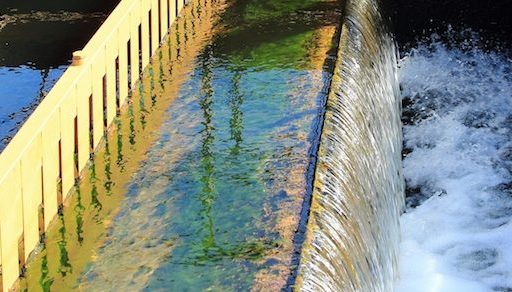As water scarcity remains one of the biggest challenges facing our world, it’s no surprise that the United Nations has designated wastewater as the theme of this year’s World Water Day on March 22nd. The truth is that “business as usual” will simply not work for our planet, for our economy, or for humanity. Our water imperative demands disruptive thinking to get us to the next level of sustainable consumption – and, wastewater is a key piece in solving the puzzle.
By now we know the jarring statistics about water scarcity – only 2.5 percent of the world’s water is fresh, and just .007 percent of that is easily accessible1. Yes, there is no alternative to water. However, what is less often discussed is the untapped potential wastewater offers.
Materials formerly considered “waste” have the potential to be turned into new products for a range of applications, and although previously unimagined, science is at the forefront of enabling such wastewater conversions. Industry itself is making significant strides when it comes to destroying unwanted contaminants in water. Coarse particle filtration, ultrafiltration, reverse osmosis and ion exchange technologies are all available today to make water treatment more efficient. Each of these solutions continues to evolve, expanding our capabilities to further reduce treatment system CAPEX, lower energy costs and improve durability in water treatment applications. For example, advancements in reverse osmosis membrane technology have empowered large municipal projects, such as the Orange County Water District’s Groundwater Replenishment System, to transform reclaimed wastewater into a safe, clean local drinking water supply. This technology has also aided in lowering the facility’s energy usage by 13 percent compared to pre-existing membranes.
In a perfect world, industry could reclaim and reuse 100 percent of the wastewater it produces with a Zero Liquid Discharge (ZLD) system. However, studies2 have shown that the process can be costly and difficult to achieve. At Dow, we’ve developed an approach called Minimal Liquid Discharge, or MLD, a system in which wastewater is used, treated, and reused in a loop to get more from every drop. With a water recovery rate reaching 95 percent, an MLD approach can be operated at a fraction of the cost compared to a direct to ZLD system. This method is quickly gaining traction as a more cost-effective, sustainable way for companies to take steps toward improving their water footprints.
Wastewater is also driving noticeable trends across the water treatment value chain, including focused attention on research and innovation. This is one reason why Dow is a founding member and sponsor of the University of Arizona’s Water and Energy Sustainable Technology Center, which focuses on bringing together industry, government, and academia to better address the nation’s growing water and energy needs through research and technology. More of these types of alliances, along with advances in innovation and smart water economics, will be essential in moving society toward a sustainable resource future.
With a fresh take on how businesses, governments and other stakeholders work together, collaborations can help drive technology advancements and new methods for valuing natural capital. For example, Pima County Wastewater Reclamation and a coalition of local government, water utilities, academia and private partners, including Dow, recently participated in The New Arizona Prize Water Innovation Challenge. The winning project, which addresses water scarcity in Arizona, uses a potable reuse treatment facility (on wheels!) that travels and partners with local wastewater treatment plants and breweries to transform wastewater into high-quality water for beer. This innovative mobile unit will help reduce reliance on freshwater sources, while at the same time, producing high quality, great tasting libations.
We can’t make good choices about water unless we have good information. Recycled wastewater can have a negative connotation among the general public, especially when it comes to the yuck-factor associated with toilet-to-tap. However, if we are to truly combat water scarcity we have to move towards a circular economy where we reduce, reuse and recycle to close the resources loop. While this transition will be challenging, we have proven technologies and viable strategies to help us get there. So, on World Water Day, let’s celebrate and tap into wastewater, rather than ignore its possibility.
- National Geographic
- Bond, R.G. and Veerapaneni, S. Journal AWWA, 2008, 100 (9), 76-89.
